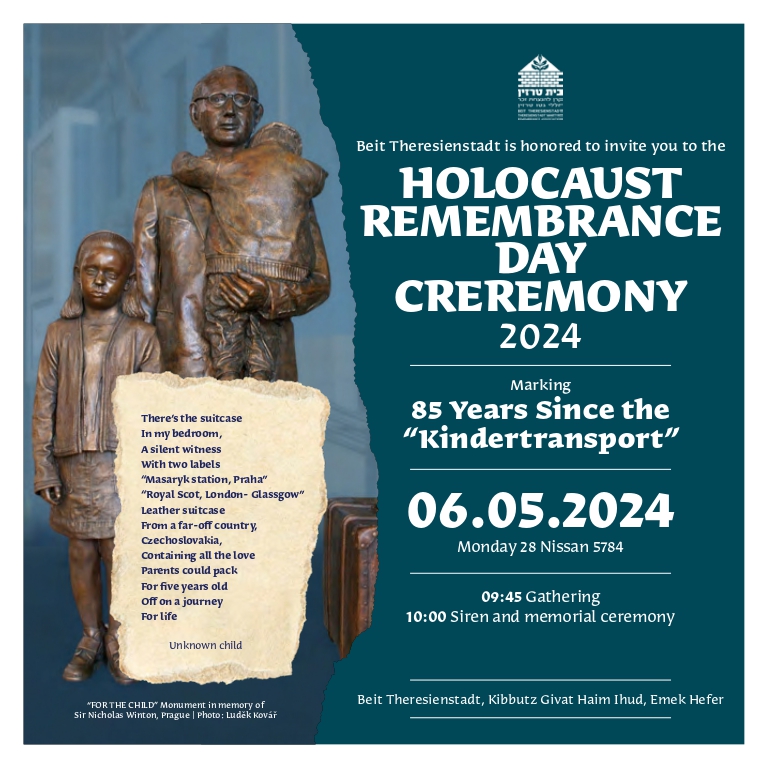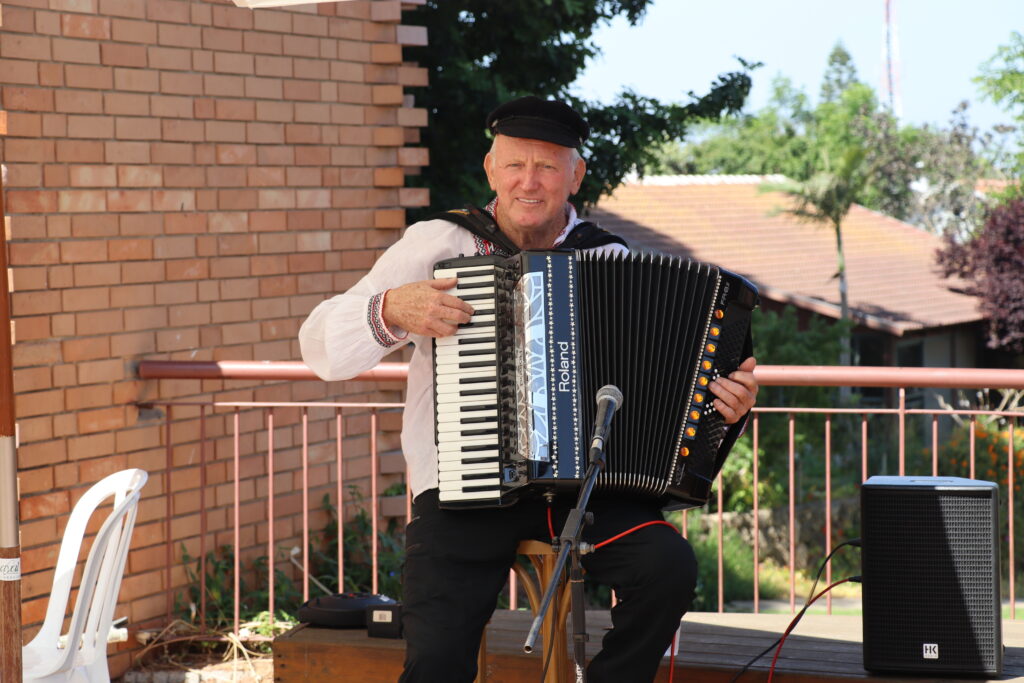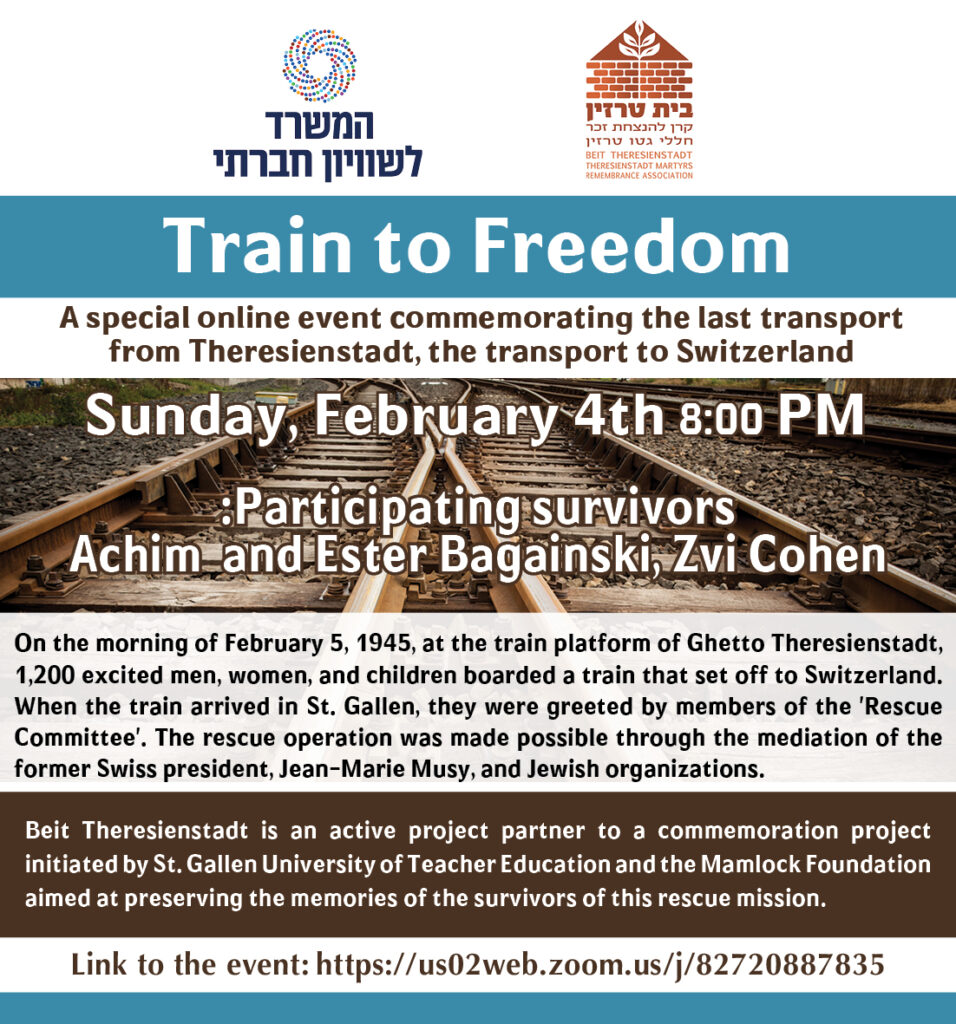Future Events
Ceremony for Holocaust and Bravery Memorial Day

Marking 85 years since the Kindertransport
Monday, 28 Nissan 5784
May, 06, 2024
Gathering at 9:45
10:00 Siren and memorial ceremony
Beit Theresienstadt, Kibbutz Givat Haim Ihud, Emek Hefer
Annual meeting of Beit Theresienstadt
Annual meeting of Beit Theresienstadt

May 24, 2024
Beit Theresienstadt, Kibbutz Givat Haim Ihud, Emek Hefer
More details to follow soon
A special online event commemorating the last transport from Theresienstadt, the transport to Switzerland

Sunday, February 4th 8:00 PM
Participating survivors: Achim and Ester Bagainski, Zvi Cohen
On the morning of February 5, 1945, at the train platform of Ghetto Theresienstadt, 1,200 excited men, women and children boarded the carriages of a fancy passenger train, a train very different from what they were used to seeing in recent months.
The train set off and arrived in Switzerland the next day. When the train arrived in St. Gallen, they were greeted by members of the ‘Rescue Committee’ that Swiss Jews had established to help Jewish refugees and bring them from the concentration camps to Switzerland. The rescue operation was made possible through the mediation of the former president, Jean-Marie Moussi, who, despite his views in the past, was horrified by the results of the Germans’ actions and tried to save what was possible.
Beit Theresienstadt is an active project partner to a commemoration project initiated by St. Gallen University of Teacher Education and the Mamlock Foundation aimed at preserving the memories of the survivors of this rescue mission.
Link to the event: https://us02web.zoom.us/j/82720887835
For further details click here

